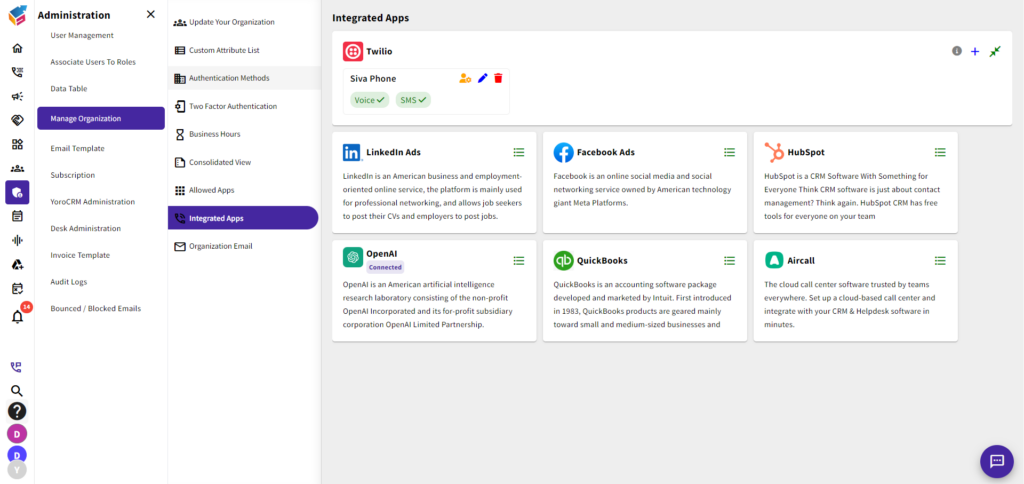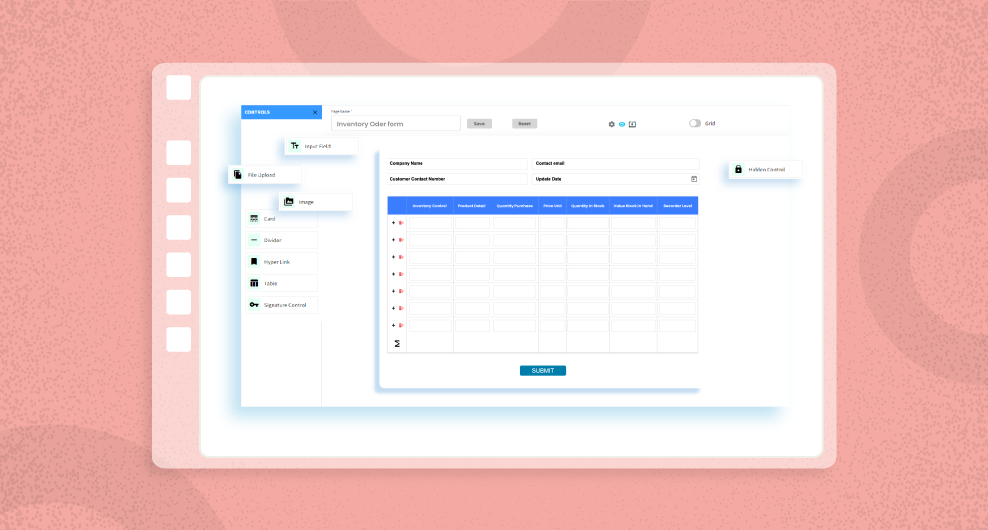Table of Contents
An order is an opportunity to build long-term partnerships and grow your business in any industry, whether manufacturing, retail, or e-commerce, and it affects all your business activities.
However, with the rise of internet shopping and the rising desire for speedier deliveries, managing orders may become difficult. B2B orders are frequently complex and necessitate customization in terms of pricing or delivery schedules. B2C orders, on the other hand, may be smaller in size but larger in volume and frequency.
Customers demand prompt and correct deliveries, regardless of whether a company is in the B2B or B2C sector of the economy. Errors could result in poor evaluations and even lost revenue. The last thing you want is for a customer to receive an incorrect or delayed delivery, which will damage your reputation.
This tutorial will investigate the core principles, benefits, implementation methodologies, and best practices related to order management systems. Whether you are a seasoned business professional or a beginner in the sector, this guide intends to equip you with thorough insights to traverse the complexity of modern order management and raise your business operations to new heights.
What is an Order Management System?
Modern organizations require an order management system (OMS), a software solution to manage customer orders from the point of origin to the point of fulfillment. It functions as a centralized platform that automates and optimizes every step of the order lifecycle, including communication, inventory management, order processing, and order tracking. OMSs interact with many different systems, guaranteeing smooth data flow throughout the business and supporting multi-channel sales. OMSs are essential for boosting operational effectiveness and creating a seamless shopping experience because they offer real-time information, improve inventory optimization, and increase consumer happiness through transparency.

Key Features of the Order Management System
An order management system serves as a comprehensive solution for businesses to streamline their order-processing workflow. It brings together various crucial features that collectively optimize the entire process:
- Order Processing Automation: Automated entry of orders reduces errors and accelerates the process by integrating orders from different sales channels.
- Real-Time Inventory Tracking: Continuous monitoring of inventory levels prevents shortages and excess stock, enhancing overall inventory management.
- Order Tracking and Transparency: Real-time order status updates for customers and internal teams minimize inquiries and enhance satisfaction.
- Fulfillment Efficiency: Intelligent allocation of orders to the best-suited fulfillment location optimizes resource utilization.
- Seamless Integration: Harmonious integration with ERP, CRM, and e-commerce platforms ensures consistent data flow across systems.

- Efficient Returns Handling: Streamlined processes for returns and exchanges improve both the customer experience and operational efficiency.
- Insightful Analytics: Data-driven insights into order trends, customer behavior, and performance aid in informed decision-making.
- Multi-Channel Management: Handling orders from diverse sales channels provides a unified overview of sales automation.
- Automated Customer Communication: Automatic notifications for order confirmation, shipping updates, and delivery details enhance customer engagement.
- Scalability and adaptability: Designed to accommodate growth, these systems flexibly adjust to varying order volumes and expanding business needs.
- Customizable Workflows: Tailoring workflows to match unique business processes is often a part of advanced OMS functionality.
- Data Security: Ensuring the safeguarding of sensitive customer data and order information is a fundamental aspect of OMS design.
In short, an OMS is like the superhero of order management, making sure everything runs smoothly, customers are happy, and business keeps growing.
Benefits of Implementing an OMS
Implementing an order management system (OMS) brings a host of advantages to businesses looking to enhance their order processing and customer experience:
- Efficiency Boost: OMS automates processes, reducing manual work, errors, and time needed for order handling, leading to quicker order fulfillment.
- Inventory Mastery: Real-time inventory tracking minimizes stockouts and excess inventory, optimizing resources and saving costs.
- Enhanced Customer Satisfaction: Transparent order tracking and automated updates keep customers informed, boosting trust and satisfaction.
- Streamlined Operations: Integration with other systems ensures smooth data flow across the organization, promoting cohesive operations.
- Accurate Fulfillment: Intelligent order allocation to the best-suited locations improves accuracy in fulfillment and shipping.
- Returns Management: OMS simplifies returns and exchanges, reducing the hassle for both customers and the business.
- Data-Driven Insights: Analytics provide valuable insights into trends, helping businesses make informed decisions and strategic plans.
- Multi-Channel Harmony: Handling orders from various channels in one place provides a unified view and consistent service.
- Automated Communication: Customers receive timely notifications, reducing inquiries and enhancing communication efficiency.
- Scalability and Flexibility: OMS adapts to business growth, accommodating increased orders and changing needs without disruption.
- Tailored Workflows: Customizable workflows align the system with unique business processes for optimal efficiency.
- Data Security: Sensitive customer data and order information are safeguarded, ensuring privacy and compliance.
In a word, deploying an OMS is a calculated business decision that enables organizations to improve business processes, deliver excellent customer experiences, and set themselves up for expansion in the competitive market of today.
Selecting the Right OMS for Your Business
Here is some advice on choosing the best order management system (OMS) for your company, just to be clear:
Choosing the right order management system (OMS) is a critical decision that can significantly impact your business operations and customer satisfaction. Here are key factors to consider:
- Business Needs: Understand your specific requirements, including order volume, channels, and workflows. Look for an OMS that aligns with your unique needs.
- Integration Capability: Ensure the OMS can seamlessly integrate with your existing systems, such as ERP, CRM automation, and e-commerce platforms.
- Scalability: Select an OMS that can grow with your business, accommodating increased order volumes and expansion plans.
- User-Friendly Interface: An intuitive interface simplifies staff training and daily usage, promoting adoption and efficiency.
- Customization: Look for an OMS that can be tailored to match your business processes, rather than forcing you to change how you work.
- Support and Training: Consider the level of support and training offered by the OMS provider to ensure a smooth implementation.
- Data Security: Ensure the OMS follows best practices for data security to protect sensitive customer information.
- Mobile Access: A mobile-friendly OMS allows you to manage orders on the go, enhancing flexibility and responsiveness.
- Vendor Reputation: Research the reputation of the OMS provider, including reviews, customer feedback, and industry standing.
- Cost and ROI: Compare the cost of the OMS with the potential benefits it offers, including increased efficiency, reduced errors, and improved customer satisfaction.
- Implementation Time: Consider how quickly the OMS can be implemented and integrated into your operations.
- Trial Period: If possible, opt for a trial period to test the OMS’s functionality and suitability before committing.
To choose the best OMS, it is important to carefully consider your company’s needs as well as compatibility with existing systems, scalability, customization possibilities, user friendliness, and security. Making a well-informed decision will enable your company to run more efficiently and provide better customer service.
Common Challenges and How to Overcome Them
Implementing an order management system (OMS) offers significant benefits, but it also comes with its fair share of challenges. Recognizing these challenges and having strategies in place can ensure a smoother transition and successful integration.
- Integration Complexity:
Challenge: Integrating the OMS with existing systems like ERP, CRM, and e-commerce platforms can be complex.
Solution: Choose an OMS with strong integration capabilities or work with experts to ensure seamless data exchange between systems.
- Data Migration:
Challenge: Transferring existing order data accurately to the new system can be daunting.
Solution: Plan and execute a meticulous data migration process, validating data integrity at each stage.
- Change Management:
Challenge: Employees may resist changes in their workflows and systems.
Solution: Provide thorough training and communicate the benefits of the new OMS to the staff, involving them in the transition process.
- Customization Challenges:
Challenge: Tailoring the OMS to fit unique business processes can be tricky.
Solution: Choose an OMS that offers flexible customization options or consult with the provider to configure the system according to your needs.
- Cost Considerations:
Challenge: The investment in an OMS might be significant, including software costs, training, and implementation.
Solution: Conduct a thorough cost-benefit analysis, considering the long-term advantages of improved efficiency and customer satisfaction.
- User Adoption:
Challenge: Employees might struggle to adapt to the new system.
Solution: Offer comprehensive training, encourage user feedback, and provide ongoing support to ensure smooth adoption.
- Vendor Reliability:
Challenge: Selecting the right OMS provider with a solid track record can be challenging. Solution: Research and consider reviews, references, and the provider’s industry reputation to make an informed decision.
- Data Security and Privacy:
Challenge: Protecting sensitive customer data is crucial.
Solution: Ensure the OMS follows stringent data security protocols and complies with relevant regulations.
- Customization Overload:
Challenge: Excessive customization might complicate the system.
Solution: Balance customization with the system’s core functionality to avoid unnecessary complexity.
- Scaling Up:
Challenge: As the business grows, the OMS should adapt to higher order volumes.
Solution: Select a scalable OMS that can handle increased workloads without compromising performance.
- Continuous Support:
Challenge: Ongoing technical support and updates are necessary to maintain optimal performance.
Solution: Choose a vendor that offers reliable support services and regular system updates.
- Testing and Validation:
Challenge: Ensuring that the OMS functions correctly and meets requirements
Solution: Rigorous testing and validation are essential before fully deploying the OMS. Test scenarios and processes to identify and resolve any issues.
While challenges in implementing an OMS are inevitable, proactive planning, thorough research, effective training, and ongoing communication can help mitigate these challenges and lead to a successful integration that drives efficiency and customer satisfaction.
Closure
Modern firms looking to streamline their processes and improve customer satisfaction must become experts in order management systems (OMS). An effective OMS streamlines communication, inventory control, and order processing throughout the whole supply chain. Businesses can expect more product development, fewer mistakes, and, ultimately, a competitive edge in today’s competitive market by putting the best practices mentioned in this thorough guide into effect. Keep in mind that an efficient OMS is more than simply a tool; it’s a calculated investment that lays the road for long-term success and growth.




